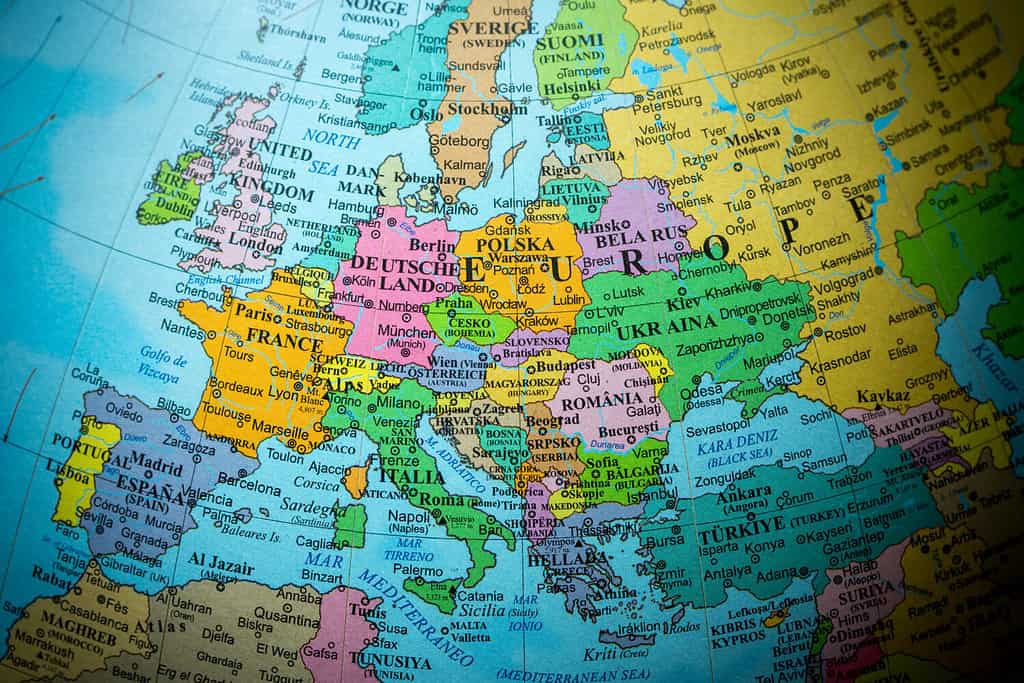Known for its significance in fishing and international shipping, the North Sea is an inland European sea. While its coast serves as a popular tourist destination, further out into the heart of this sea, playful tides become crashing waves, creating one of the world’s roughest seas. Below, learn more about the North Sea, plus watch some videos highlighting this sea at its roughest!
What is the North Sea?

Many people know the North Sea as one of the most dangerous seas in the world.
©Steve Allen/Shutterstock.com
The North Sea is an epeiric sea, also known as an epicontinental sea or, more commonly, inland sea. Inland seas can either be entirely surrounded by water or connected to the ocean through straits and similar geographical features. They aren’t as salty as oceans, but their water has a higher salinity than that of most lakes and ponds. Plus, the tidal behavior and floors of inland seas often differ greatly from that of freshwater sources.
Where is the North Sea Located?

This sea is found in Europe, between the United Kingdom, the Scandinavian Peninsula, and continental Europe.
©Victor Maschek/Shutterstock.com
The North Sea is located in Europe. It lies between several western and northern European countries and regions. This includes the United Kingdom, Belgium, the Netherlands, Germany, Denmark, Sweden, and Norway. This sea connects to the Atlantic Ocean through the English Channel. Here, the North Sea borders France as well.
The North Sea lies at the coordinates 56°N 3°E.
Why is the North Sea So Rough?
The overall rough nature of the North Sea lies in the fact that the sea is so shallow. The North Sea has a maximum depth of 2,300 feet. However, the average depth of this sea is only 312 feet. For reference, Lake Superior in North America has an average depth of 483 feet.
Because of this relatively shallow depth, the North Sea is home to extreme currents. These strong currents may pull in different directions, creating dangerous waters. The North Sea is also no stranger to bad weather, especially in the middle of the sea. Conditions are often foggy, and severe storms can appear often.
It is because of these factors that the North Sea is often considered to be one of the most dangerous seas in the world.
Wildlife Found in the North Sea

Grey seals can be common sights on the shorelines of the North Sea.
©Ian Dyball/Shutterstock.com
Various unique animals call the North Sea home. Although some are more commonly seen, such as birds, fish, and marine mammals that thrive in the upper regions of the water column, much of the wildlife lies on the floor of the North Sea. These are known as benthic organisms, and they include the likes of crustaceans, worms, and similar animals. Much of the bottom of the North Sea is mud and sand. However, in a few select regions, the bottom is mostly rock. Because of the different habitats available, many types of benthic organisms can inhabit the North Sea.
Animals that you are more likely to see when visiting the North Sea include:
- Harbor porpoise
- Grey seal
- Common tern
- Dwarf tern
- Sandwich tern
- Grebe
- Great black-backed gull.
Many of the aquatic animals of the sea can be difficult to spot without taking a boat into the depths of the water. However, from the shore, beachgoers can enjoy discovering various birds, shellfish, and more.
The Craziest North Sea Videos on the Internet
Although dangerous, the North Sea is an important sea used for international trade. Because of this, many videos have emerged that highlight some of the roughest weather experienced on this sea.
The video above shows off the crew of the Draken as they face the North Sea as it brews as a storm brews. The Draken is a modernized Viking sailship, the largest in the world, and its journey shows what crossing the North Sea would have been like for Vikings hundreds of years ago. Today, modern motorized boats made of tons of steel struggle to navigate these waters safely, and the Draken shows just what a feat it is to do so with wood and sails.
To better showcase how modern boats handle the North Sea, the above video shows a fishing trawler steers into the North Sea during a storm. As the weather rages, the North Sea produces mind-blowing waves that crash against the hull of the ship with unimaginable force. The monstrous waves loom like mountains over the front of the ship, and the ship’s large size is made noticeable as it ducks and bobs along the waves. At one point, a particularly strong wave rocks the boat, causing the sound of equipment rattling to occur somewhere offscreen as the front of the ship is briefly filled with water.
The photo featured at the top of this post is © DJ Mattaar/Shutterstock.com
Thank you for reading! Have some feedback for us? Contact the AZ Animals editorial team.







